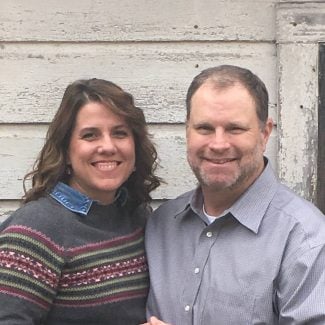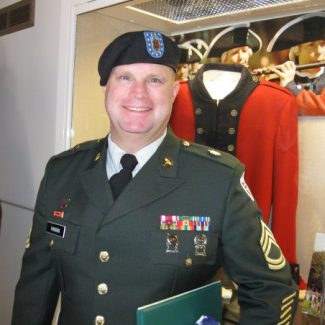The school of Nursing and Allied Health, along with the rest of Newman University, welcomes Jeffery Vaughn into his new position as Director of the Radiology Technology Program.
Vaughn has worked with Newman for two years as the assistant professor and clinical coordinator, and as of May 15, he is filling Megan Rucker’s previous position. Rucker returned to practice at Hutchinson Hospital in May.
“Before Megan left, we met with the financial aid department because right now the program is six semesters long, but only two of those are full time, so you have to find other classes to fill,” Vaughn said. “And so it makes it hard when people ask the university, ‘How much does it cost to complete this program?’ They can’t really give them a definitive answer because it depends on which courses you decide to fill in.
“Starting next year, we’re trying to do a curriculum change and hopefully cut that down to five semesters in which every semester is full time, so it will help with the financial side of it. That’s one of the biggest things that we are trying to change.”

Vaughn, who is originally from Georgia, retired from the Army seven years ago. Throughout his military service, he spent four years in the reserves followed by 20 years active duty. He earned his bachelor’s degree in marketing in 1988 from Jacksonville State University in Jacksonville, Ala. Then, while serving active duty, earned a master’s degree in Human Resource Management from what is now called Troy State University in Troy, Ala.
Vaughn worked as a buyer for a department store in Atlanta after graduating from college in 1988. He worked 80 hour weeks and was making $19,000 annually, but thought that there had to be something better out there, he said.
“I was still in the reserves at that time, so I decided to check it out,” he said. “They offered for me to be an X-ray technologist or a paralegal, so I chose to be an X-ray technologist. They chose to pretty much send me all over the world.”
Vaughn’s first duty station was in Belgium at Supreme Headquarters Allied Powers Europe (SHAPE), where he worked as the Radiology Manager. SHAPE is the headquarters for the North Atlantic Treaty Organization (NATO). While in Belgium, Vaughn met his wife Jennifer, who is originally from Rose Hill, Kan.
“Her aunt was the head nurse at the hospital I worked at,” Vaughn said. “She had just come to visit her family in the summer of 1992, and we met and have been together ever since.”
Vaughn eventually traveled back to Georgia and was then sent to Kentucky followed by Hawaii. After hearing that he would be stationed on the tropical US island, Vaughn said to himself, “Well, someone’s gotta go there, so it might as well be me.” After spending three years in Hawaii, Vaughn was sent to Cambodia for a month on a humanitarian mission.
“We were dodging landmines, so it got scary at times,” he said. “There were a lot of landmines left over from their civil wars in 2001, and it was estimated that they had about ten million still on the ground.”
Vaughn finished his service in Hawaii and was then sent back to San Antonio, Texas. He taught radiology for four years for the military and completed his final days of military service at the Walter Reed Army Medical Center in Washington, D.C.
“I knew I wasn’t going to stay in the military my whole life,” Vaughn said. “We were always encouraged to think about what sort of jobs we would be interested in doing after we got out. I thought this was a good opportunity for me to go and do something different, because you never know how it is going to help you in the future. You don’t just want to be one-sided, you’ve got to do different things. And for me, radiology was one of them.
“I knew in radiology you can change, and that there are a lot of different modalities,” he said. “There’s MRI, CAT Scan and a lot of different things that you can do. It’s always changing.”
Vaughn added, “When I went to Cambodia, they were hand-dipping film, and when I went to processing you had to mix chemistry and do all of that yourself, and now we’re to the point where everything is digital and you don’t have any of that.”
In March of 2010, Vaughn and his wife moved to Wichita. Three weeks later, Vaughn attended the Kansas Society Conference, which took place at Newman University in the Dugan-Gorges Conference Center. This was his first exposure to the Newman community.
While attending, Vaughn officially met Janie Ward, who recently retired from Newman after 20 years as the assistant professor and clinical coordinator of radiologic technology.

“She was a part of the American Society of Radiologic Technologists (ASRT), the national society, and because I have been going to those since 1998, I knew her from there,” he said. “I knew who to talk to, so I reached out to them as far as jobs went. Little did I know it would lead to me coming to Newman.”
Vaughn worked as a radiology supervisor at the Via Christi Clinic for five years, and through his connections with Ward and the ASRT, he began working at Newman University.
Vaughn continues to stay involved with the Kansas Society of Radiologic Technologists (KSRT) and even gives a presentation once a year to students from five schools in the state of Kansas. This year, he spoke at an all-day student conference in Salina about his experiences during his time in Cambodia.
“When you go through these schools, you are at the best hospitals with the best equipment,” he said. “But when you go there, to these third-world countries, you don’t have all of that.
“You have to think a lot differently there than you do here. By speaking to students, I peak their interests in doing medical missions, and I get to show them what type of equipment is used. A lot of times I will still put on my military uniform and give the presentation in uniform so they can get the full effect of it — if I can still fit into it every now and again, that is.”
Vaughn said he is grateful for the renovations to Eck Hall as well as the new Bishop Gerber Science Center because he will be able to get a digital X-ray machine approved.
“Even in our old classroom there was an X-ray machine from the 70s or 80s, but it wasn’t really functional,” he said. “But now I can actually make exposures. We have different phantoms, and hopefully, we can eventually get a full body manikin to make full exposures. With that, I can show students that if you change this technique that you use, this is what changes, and right now I can’t show them that unless it’s on a powerpoint.
“Now we are going to get more hands-on experiences to the students,” Vaughn said. “I think it makes a better learning experience for them and will make them better technologists once they get out into society.”


